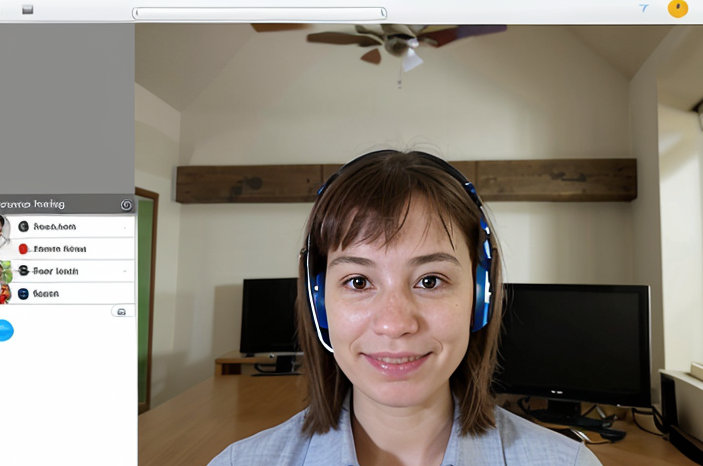Can Human Resources Lie To You?
Human Resources, or HR, plays an important role in workplaces today. They help employees and the company. HR manages hiring, onboarding, and training. They ensure workers know the rules and benefits. Trust is essential between HR and employees. But how do workers see HR? Some think HR is their advocate. Others see them as enforcers of rules. This creates a tricky balance.
Are You a Good Fit for This Job?
For some, HR feels like a safe space. Workers can speak about concerns without fear. But the same HR might take actions that hurt trust. One moment, they seem like friends. Next, they might uphold harsh policies.
- HR provides feedback.
- They oversee work-life balance.
- They handle conflicts between workers.
Every month, they speak with employees. This helps build good relationships. Yet, HR often faces pressure from management. This can lead to conflicts of interest. Employees feel caught in the middle. Miscommunication can occur.
HR has the power to shape company culture. They guide how people interact at work. When things go wrong, employees may worry. Will HR protect their job?
Sometimes, HR must follow orders. This can create misunderstandings. Employees might feel lied to, even if it’s not true. Sometimes workers need to be informed. HR also helps with layoffs and resignations.
In some cases, employees feel they can not trust HR. Real-life stories show the struggle. For example, one worker said that HR took too long to address their issue. Another worker thought they were being ignored.
Understanding the nature of HR communications and their confidentiality can help alleviate concerns. For more insights, check out this article about the confidentiality of HR concerns.
These experiences shaped how they saw HR. They learned to be cautious. This shows the power dynamics of trust and fear. HR must walk a fine line.
The Fine Line Between Honesty and Strategic Communication

HR departments often face challenges when communicating changes. Good communication is crucial. Yet, messages can be misinterpreted. They can lead employees to believe false ideas. A case study at XYZ Company illustrates this point. Employees learned about a new policy. At first, they felt excited. But soon, confusion spread.
The new policy promised flexible work hours. Many employees assumed they could choose their hours. HR intended to promote balance. However, the message lacked clarity. Employees misread the intention. They thought it provided full freedom.
Leaders noticed their mistake. Some teams struggled with schedules. Conflicts arose as workers tried to adapt. Trust began to erode. It was a difficult situation. Employees felt frustrated and voiced their concerns.
- Miscommunication can undermine trust.
- Clarity is essential for successful change.
- Feedback loops must be present in communication.
In response, HR launched an information session. They explained the policy clearly. Employees could ask questions freely. The communication shifted from vague messages to direct dialogue. This helped clear the air. People felt heard, but fears remained. They worried about future changes.
In this case, HR focused on positivity. However, it induced worry and doubt. Some worried about job security. The organization faced pushback regardless of good intention. These examples show a critical lesson. Employees need honest information in times of change. With misinformation, organizations face greater fallout.
More challenges came with the annual performance review process. HR communicated changes with optimism. But employees perceived these changes as punishment. They thought standards were unrealistic. Stress levels rose among workers. Many workplace morale fell sharply.
HR may find itself walking a fine line. They want to be strategic yet transparent. Balancing both is challenging. Future communication must ensure clarity. This balance can help restore trust.
In conclusion, this case study highlights pitfalls to avoid. Misconceptions arise often from vague communication. Trust cannot be built on unclear messages. Honest strategies should always come first. By focusing on transparency, HR can rebuild relationships.
Real Stories: Employee Experiences with HR
Many employees have shared their stories. Each tale highlights different feelings. Some felt betrayed. Others found support. Trust is a tricky issue in HR.
Work From Anywhere Opportunities:
Alice worked in a big company. She needed help with a serious issue. HR promised to assist her. Days turned into weeks with no updates. Alice felt ignored. She finally learned HR hid details from her. This hurt her deeply. The trust she had vanished.
Tom’s story is quite different. He received a promotion after hard work. HR recognized his efforts sincerely. They celebrated his success. Tom felt valued and supported. He appreciated their honest communication. Confidence grew among his peers. HR can indeed shine when done right!
There was also Emma. She asked HR about health benefits. They gave her incorrect information. Emma missed out on essential services. She felt lost in the system. Later, HR admitted the mistake but it was too late. She struggled with stress. Trust was now a rare gift.
Some employees report mixed experiences. Luke faced a layoff. HR provided support during the process. They helped him find new jobs. Luke felt grateful for their help. But, he also felt sad about leaving. HR’s honesty made a tough situation bearable.
Others, like Sarah, felt confusion instead. She was told to apply for a new role. HR said it was a great move for her career. Later, she felt tricked. The promotion wasn’t what she expected. Confusion can lead to distrust.
Many wonder about HR’s role in these stories. They often walk a fine line. Balancing company needs and employee needs is hard. Unexpected issues can arise quickly. This shows humans are complex. Communication is key in these situations.
Employees are not only numbers on a spreadsheet. They have feelings and hopes. They expect honesty and support. When HR fails to deliver, the impact is deep. Trust, once broken, is hard to rebuild.
In conclusion, we all share these experiences. Listening to each other’s stories matter. It helps create better workplaces. Together, we can foster stronger connections.
Understanding the Lessons Learned

Building trust in an organization is key. It can lead to better work environments. HR must communicate clearly. A misunderstandings can cause distrusting. Honest conversations build stronger ties.
Employees thrive when they feel valued. HR professionals hold the responsibility. They must create a culture of transparency. Everyone benefits when trust grows.
- Listen actively: HR should hear employee concerns.
- Be open: Share information regularly and confidently.
- Encourage feedback: Create channels for suggestions.
- Clarify messages: Avoid jargon and speak plainly.
Good communication hardens trust. Misleading information causes confusion. HR can avoid deceptions by affirming commitments. This fosters a workplace of respect.
Moreover, training is essential for HR. They need skills to navigate tough conversations. Workshops on empathy and engagement are vital. Explore new methods of connection.
Leaders can also promote trust. Their actions set the tone for the workplace. When leaders share their stories, trust blossoms. Everyone feels they belong.
Employees faced challenges with HR. These stories show the weight of emotions. Sadness happens when trust breaks. HR must acknowledge feelings without judgment.
Lessons from these experiences can inform future practices. Efforts to improve communication can reduce fear. Employers can celebrate transparency openly. A cohesive culture fosters loyalty and retention.
In closing, HR must prioritize integrity. Trust takes time to build. Honesty begets stronger relationships. Implementing these strategies can lead to positive changes. Meaningful interactions benefit all involved.
The Road Ahead: Evolving HR Practices
Change is coming in Human Resources. The future will focus more on trust. Technology will play a big role. New tools will help teams speak openly. These tools can bring clarity and reduce confusion.
Companies are shifting to employee-centered policies. This means more support for all workers. It encourages everyone to share ideas. Employees needs and feelings will matter more. This leads to a workplace of honesty and respect.
- Tech tools like AI will help HR improve communication.
- Data will guide decisions about employee satisfaction.
- Training will become part of everyday work life.
- Transparency will be a goal for every HR team.
In this open world, leaders must listen more. It’s key for building strong trust in the workplace. Innovation and honesty will go hand in hand. Collaboration will foster better relationships. Everyone wants to feel valued and heard.
As we move forward, workers will demand more. They expect HR to be honest and supportive. Policies which promote openness will rise. Organizations growing in this way will succeed. Perhaps, a shift is needed.
The main goal should be clear communication. Regular feedback can lessen misunderstandings. The days of hidden processes are fading. People want to know what’s really going on.
HR departments must adapt to this change. Refreshing training programs will be key. Cutting edge practices will lights the way. It matters what employees feel and think.
When HR builds trust, everyone wins. Better workplace relationships will nurture productivity. High morale fosters a thriving company culture. Companies will stand out in a crowded marketplace.
Transparency will create strong teams. Workers will engage fully when they trust HR. Those relationships are built by consistent actions. More and more people will appreciate these changes.







